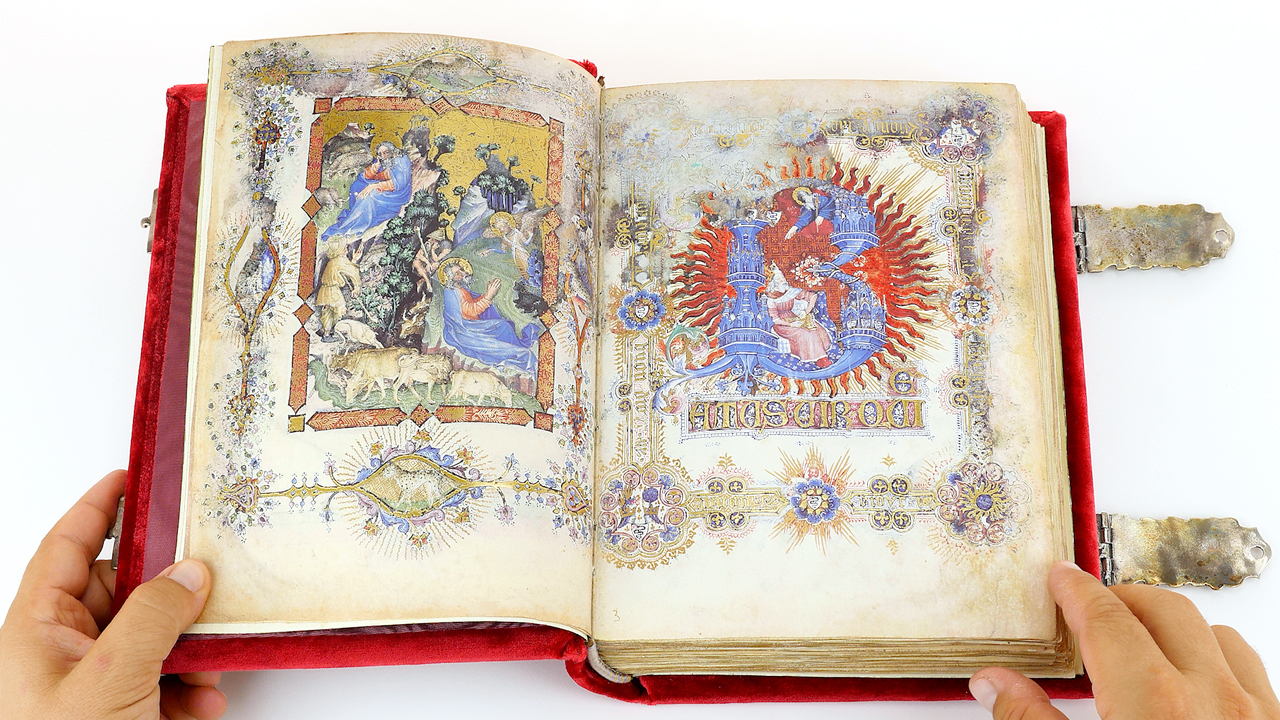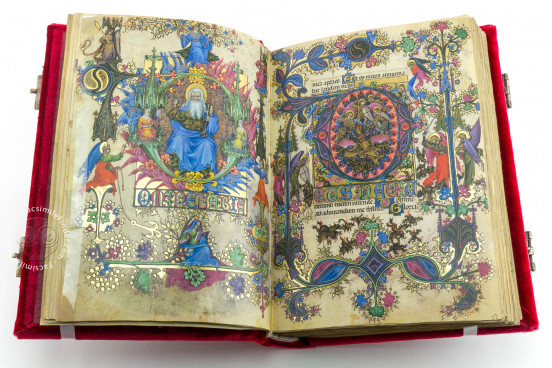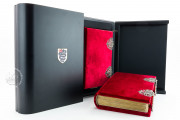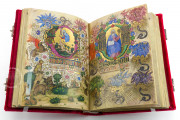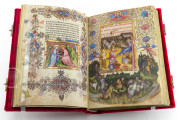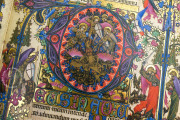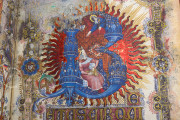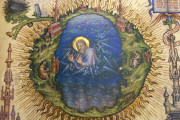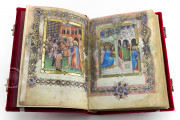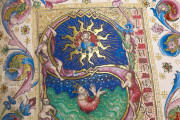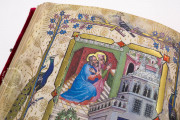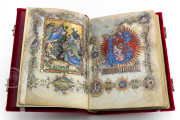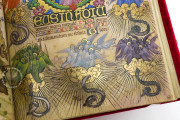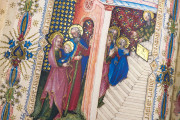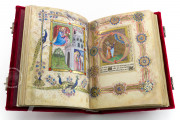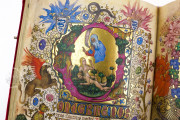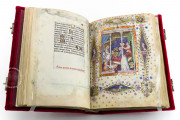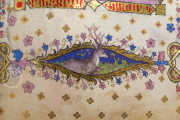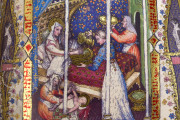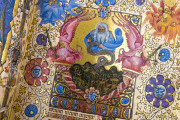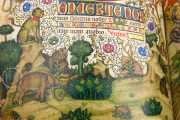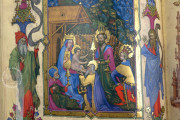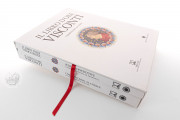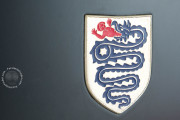Late in his life, the Duke of Milan Gian Galeazzo Visconti commissioned a series of splendidly illuminated volumes dedicated to the representation of the naturalistic world and medicine. Gian Galeazzo Visconti promoted the production of religious manuscripts as well. The Visconti Book of Hours preserved in the Biblioteca Nazionale in Florence (MSS BR 397 e LF 22) is one of the most lavish codices that the Duke of Milan commissioned. With the production of this Book of Hours, along with the manuscripts of secular content just mentioned, the cities of Pavia and Milan became major centers of illuminated manuscripts.
The Making of the Visconti Book of Hours
Bearing different names, the Offiziolo Visconti, or Libro d’Ore Visconti, Visconti Book of Hours, this manuscript is a prayer book containing Hours and Psalms. It is divided into two volumes and it is richly illuminated. This Book of Hours was certainly commissioned by Gian Galeazzo Visconti.
He is mentioned twice in the second volume of the manuscript and his heraldry appears throughout the codex. The date is not certain, but the style and iconography of the illuminations point to a period around 1388, the year of the birth of Giovanni Maria, the first child of Gian Galeazzo and Caterina Visconti.
An Eccentric Pictorial Program
Full-page miniatures and historiated initials introduce principal text divisions. The large decorative cycle includes thirty-eight full-page miniatures and ninety historiated initials. Two quite different artists painted this extravagant Book of Hours, probably one of the most spontaneous and fanciful of Western illumination.
At the end of the fourteenth century, Giovannino de' Grassi and his workshop painted the opening folios of the manuscript for Giangaleazzo Visconti. Giovannino de' Grassi displayed in the illuminations his personal style: his focus on the effects of lights is visible in the rays of light radiating from saints and prophets. These lines give a precious and luminous effect to the scenes.
Typical of his artistic language is the poetic but careful examination of the natural world and the landscapes. Bright colors and precise use of gold leaf, as well as silver, provide the manuscript with a precious appearance. In 1402, Gian Galeazzo died and the work on the manuscript was interrupted.
Working under the patronage of Filippo Maria, son of Gian Galeazzo, the artist Belbello da Pavia completed the second part of the codex. Many illuminations belong to the early career of Belbello da Pavia and show the highly detailed and elegant style. Border decoration designed with extreme variety and imagination further enriches the Book of Hours.
We have 1 facsimile edition of the manuscript "Visconti Hours": Libro d'Ore Visconti facsimile edition, published by Franco Cosimo Panini Editore, 2003
Request Info / Price
